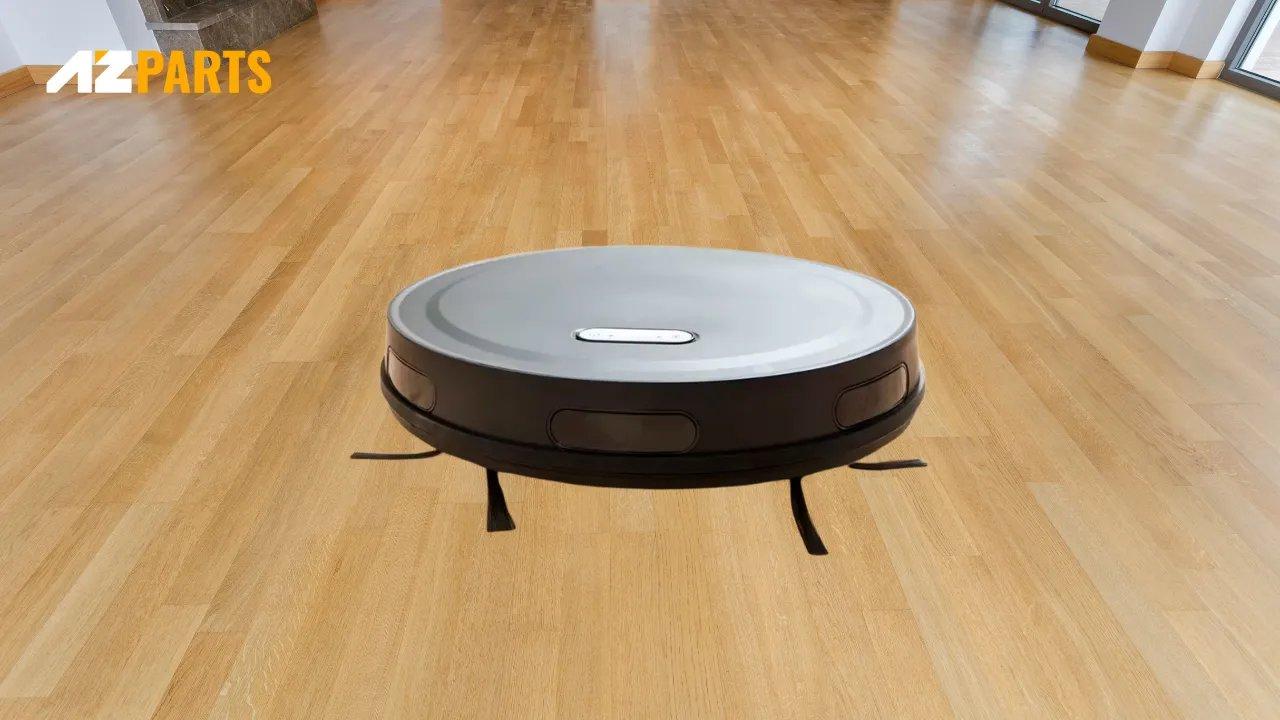Repair help
Why Is Your Vacuum Not Sucking? Common Fixes Explained
AZparts Team
Updated on December 4, 2025
6 min read
A vacuum cleaner is a familiar household appliance that helps clean dust and debris quickly and conveniently. However, after a period of use, many users find that their vacuum operates with weak suction or barely picks up anything, even though it still makes noise as if it is working normally. This often indicates that some internal components may be experiencing issues. In this article, AZParts will help you identify the common reasons why a vacuum not sucking and provide practical solutions to restore its performance.

1. Clogged Filters
The filter is a crucial component that traps fine dust and small particles, preventing them from being released back into the air inside your home. However, over time, accumulated dirt and debris can clog the filter and obstruct airflow. When this happens, the vacuum cleaner will lose suction power significantly or may stop picking up debris altogether.
To fix this issue, you should remove the filter and clean it regularly according to the manufacturer’s instructions. If the filter is torn, deformed, or too dirty to be effectively cleaned, it should be replaced immediately. Using a high-quality replacement such as the AZParts vacuum filter can help restore strong suction performance and ensure your vacuum continues to operate efficiently over the long term.
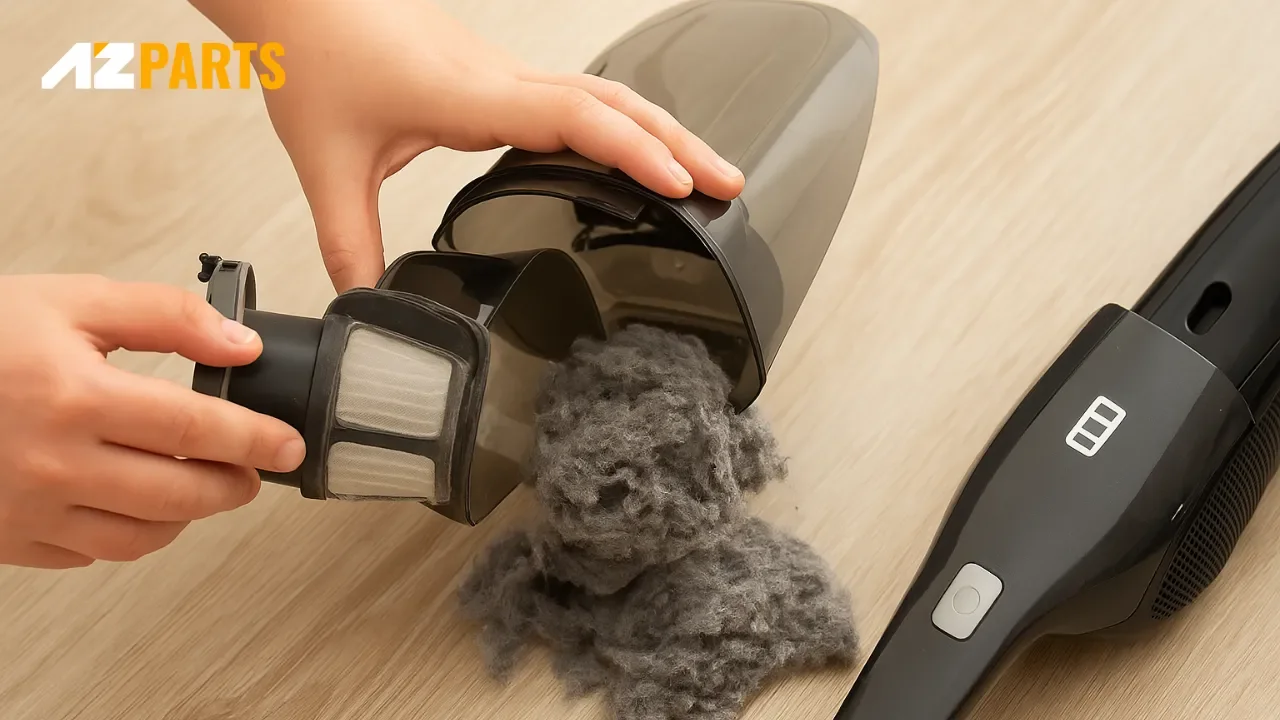
The filter is a crucial component that traps fine dust and small particles (Source: AZParts)
2. Overfilled or Improperly Fitted Dust Bin/Bag
The dust bin or vacuum bag is where all the dirt and debris collected by the vacuum is stored. When this compartment becomes full, there is no space left for additional debris, which blocks airflow and causes the vacuum to lose suction or stop working effectively. Additionally, if the bin or bag is not installed correctly and does not fit securely with the body of the vacuum, air leaks can occur. These gaps reduce internal pressure and significantly weaken suction power.
To maintain optimal performance, you should empty the dust bin or replace the vacuum bag regularly, before it becomes overly full. Always ensure the bin or bag is properly aligned and securely attached according to the manufacturer’s design. This helps prevent air leakage and keeps the vacuum operating at full suction strength.
3. Blocked Airflow in Hose or Wand
During use, objects like hair, small wires, paper scraps, or larger debris can accidentally get sucked in and become lodged inside the vacuum’s hose or wand. When airflow is obstructed, the vacuum loses suction, operates less efficiently, or may produce unusual noises.
To resolve this issue, detach the hose and inspect the interior carefully, removing any blockages you find. Regularly cleaning the hose is a good habit that helps prevent future clogs from occurring. For more thorough cleaning and to reach difficult areas inside the hose, you can use an AZParts vacuum brush attachment to help clear obstructions and keep your vacuum running smoothly.
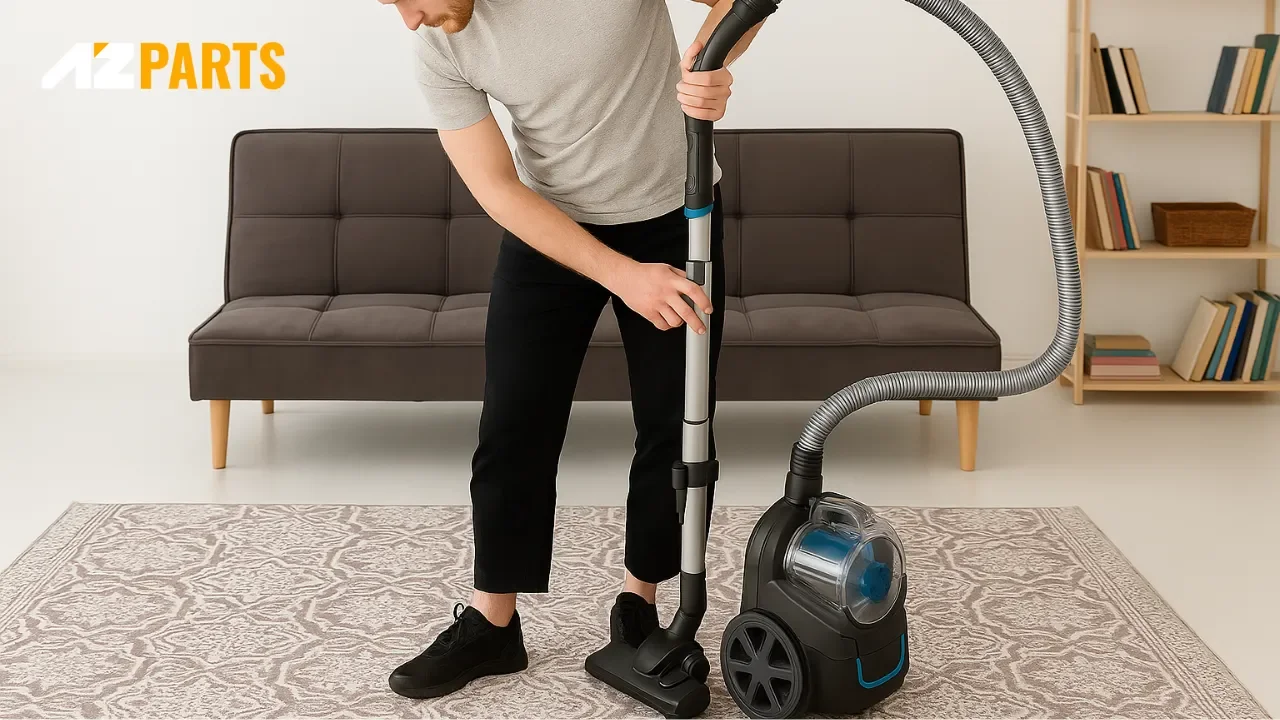
Vacuum brush attachment to help clear obstructions and keep your vacuum running smoothly (Source: AZParts)
4. Tangled or Worn-Out Brush Roll
The brush roll spins continuously to sweep up dust, hair, and debris from the floor and direct it into the vacuum’s suction path. However, if hair, pet fur, or threads become wrapped around the brush roll, its rotation can slow down or stop entirely. This prevents debris from being lifted properly, significantly reducing cleaning performance.
Over time, the bristles on the brush roll may also become worn, stiff, or fall out, making the brush less effective at agitating dirt and lifting it from surfaces. To maintain optimal performance, regularly remove the brush roll, clean off any tangled debris, and inspect the bristles. If the brush is damaged or heavily worn, it should be replaced to restore the vacuum’s cleaning efficiency.
5. Loose, Damaged, or Twisted Belt
The vacuum belt is responsible for transferring power from the motor to the brush roll, allowing it to rotate continuously while cleaning. If the belt is loose, snapped, or twisted out of position, the brush roll may stop spinning or rotate weakly. This can significantly reduce the vacuum's ability to clean, especially on carpets or surfaces with embedded dust and debris.
You should check the belt regularly, especially if the brush roll is not turning or you hear unusual noises during operation. If the belt is damaged or worn out, replacing it will help restore proper performance and maintain consistent suction.
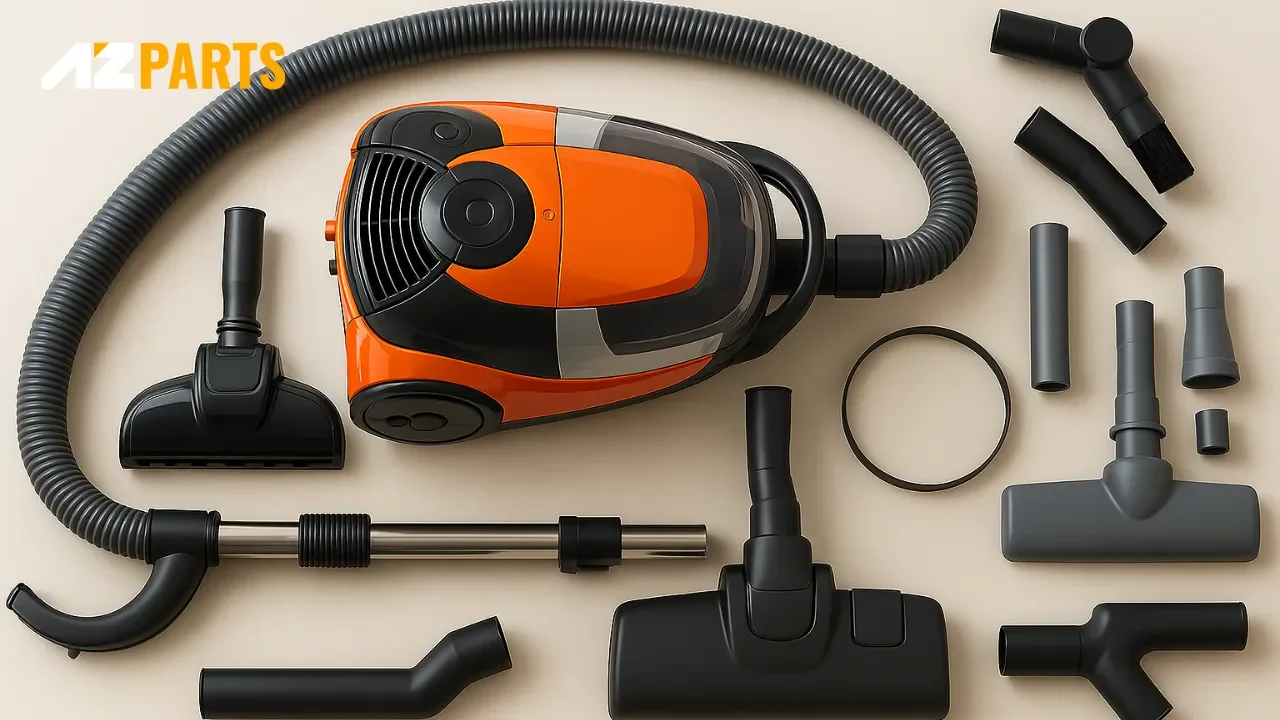
The vacuum belt transfers power from the motor to the brush roll, helping it spin during cleaning (Source: AZParts)
6. Cracked Seals or Leaky Gaskets
Rubber seals and gaskets help keep the connections between vacuum parts tightly closed, maintaining the internal vacuum pressure. If these components become cracked, torn, hardened, or misaligned, air may leak out instead of being directed through the filtration system. As a result, the suction power may drop significantly or disappear entirely.
To fix this issue, check the connection points between the hose, dust compartment, and vacuum body for signs of wear or damage. If a seal is no longer flexible or visibly damaged, replace it to ensure an airtight fit and restore optimal suction performance.
7. Wrong Suction Setting or Mode
Many modern vacuum cleaners come with multiple cleaning modes such as hard floor, carpet, gentle suction, or a combination of vacuuming and mopping. Each mode is designed to suit a specific surface type or cleaning need. If you select the wrong mode or set the suction power too low, the vacuum may not perform effectively and could fail to pick up dust as expected.
To maintain optimal cleaning performance, always check and adjust the machine's current setting to match the surface or material you are cleaning. For vacuums with a combined vacuum-and-mop function, make sure the mop pad is properly attached, clean, and still in good condition. If the pad is worn out or no longer absorbs well, consider replacing it with an AZParts vacuum mop pad to ensure the vacuum works efficiently and delivers a thorough clean on your floors.
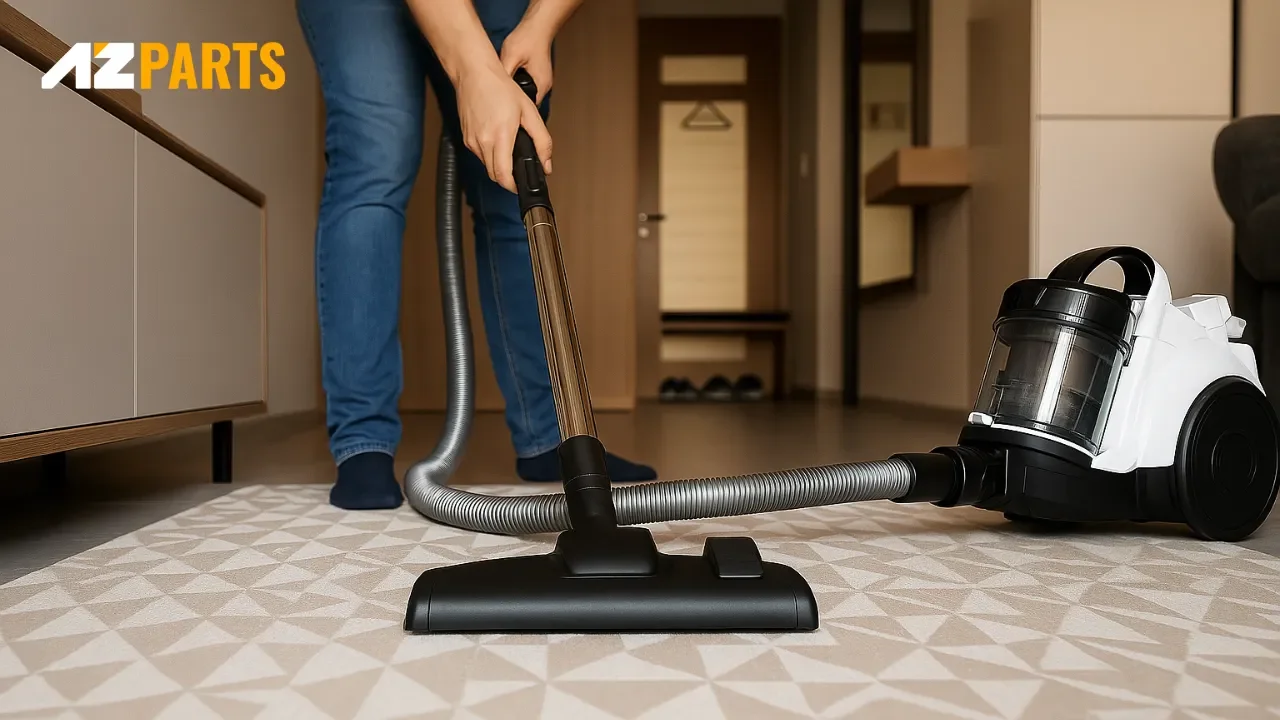
Each mode is designed to suit a specific surface type or cleaning need (Source: AZParts)
8. FAQs
8.1 Why is my vacuum not sucking even after I emptied the bag?
Emptying the dustbin or replacing the dust bag is only one step in maintaining your vacuum. If the vacuum still doesn’t suction properly, the issue may lie elsewhere, such as a clogged filter, a blocked hose, or tangled brush rollers. It is important to inspect the entire system carefully to remove any remaining debris or obstructions.
8.2 Can old belts or brushes cause suction loss?
Yes. A worn-out belt or brush can significantly affect your vacuum’s performance. A loose or stretched belt can cause the brush to stop spinning properly, while a worn brush cannot gather debris effectively. Replacing these parts when necessary will help restore the vacuum’s original suction efficiency.
8.3 Is there a quick fix kit available?
Yes. If you prefer to maintain your vacuum at home, consider using the AZParts vacuum kit. This kit typically includes essential replacement components such as a drive belt, brush roller, dust filter, and mop pad. Regularly replacing these parts helps keep your vacuum running smoothly, extends its lifespan, and saves you from costly professional repairs.
Loss of suction in a vacuum cleaner is not always a sign of serious malfunction. In many cases, simply cleaning the machine regularly, replacing a few basic components, or selecting the correct operating mode can restore its original performance. Identifying the cause early and addressing it properly will save you time, reduce repair costs, and extend the life of your appliance. If you need to replace the filter, brush roller, drive belt, or other accessories, be sure to check out genuine vacuum parts from AZParts to ensure high quality and full compatibility with your vacuum cleaner.
Contact Info
Address: 8 The Green, Ste A, Dover, Delaware 19901-3618, United States
Email: support@azparts.com
Vacuum
Further Reading
Further Reading




